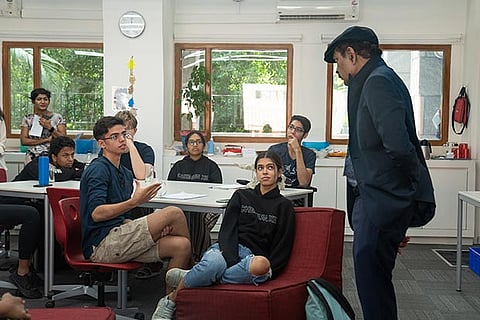

Chennai
For long, doctors across the world faced a rather perplexing problem: almost all the patients who had a limb amputated used to complain about pain in their missing limb. It clearly was a trick their minds played, but for those undergoing it, the pain was real and often unbearable. But how do you treat a body part that is not there anymore?
Eventually, it was a neuroscientist with roots in Chennai who found a solution for it, one that was so simple in hindsight that it was staring at their face all the while: use a mirror to trick the brain. That, and several other less popular but equally significant work catapulted Dr VS Ramachandran to global fame.
After his formative years in Chennai, including a gaining his MBBS degree from Government Stanley Medical College, he obtained his PhD from Trinity College, Cambridge University. Now the director of the Centre for Brain and Cognition (CBC) and psychology professor at the University of California, San Diego, Ramachandran is now in Chennai to attend the music festival, Margazhi, and also deliver lectures to inspire young professionals.
Addressing a gathering during a symposium held at American International School – Chennai (AISC) here on Wednesday, Ramachandran took them through the various neuropsychological disorders and the unusual symptoms that accompany them, including some that he helped diagnose during his career, and emphasised how simple and elegant solutions that “trick” the brain has led him to some of his ground-breaking works.
Speaking to DT Next on the sideline of the symposium, Ramachandran briefly explained his work on the neural mechanisms underlying human behaviours, particularly "empathy" neurons and phantom limbs, which took him into the forefront of mind-body neuropsychological research.
“I study the human brain in detail, its functions and structure. The brain has 100 billion nerve cells, many of them interacting with each other. Our approach is to look at patients with sustained damage to a small region of the brain where there's been a genetic change,” he said.
His most noted achievement is the innovative mirror box therapy that helps amputees deal with the pain that they feel in the missing limbs. It is a simple contraption that has mirrors inside and an open top. If, for instance, a person loses his left arm, his right arm will be put inside the box. When he looks at the mirrors inside box from above, he would see the inverted image – that resembles the left arm.
“The therapy is basically diverting the brain system. It helps them feel that they still have the missing limb. The mirror therapy has been used to treat phantom limb pain, neuropathy complex regional pain syndrome, neuropathy and low back pain,” he said.
The work Ramachandran did at the Centre for Brain and Cognition was the first to show that mirror feedback therapy can remarkably reduce chronic phantom limb pain. “Since then, dozens of studies have demonstrated its efficacy in treating phantom limb pain, complex regional pain syndrome, unilateral neglect, and paralysis resulting from stroke,” he said.
The eminent scientist, termed the "Marco Polo of neuroscience", is an honorary life member of the Royal Institution of Great Britain and was awarded the Padma Bhushan in 2007, the country's third highest civilian honour.
Visit news.dtnext.in to explore our interactive epaper!
Download the DT Next app for more exciting features!
Click here for iOS
Click here for Android